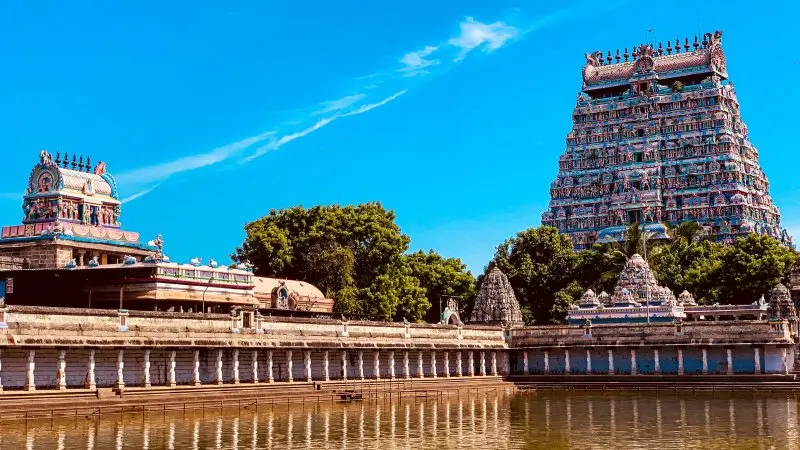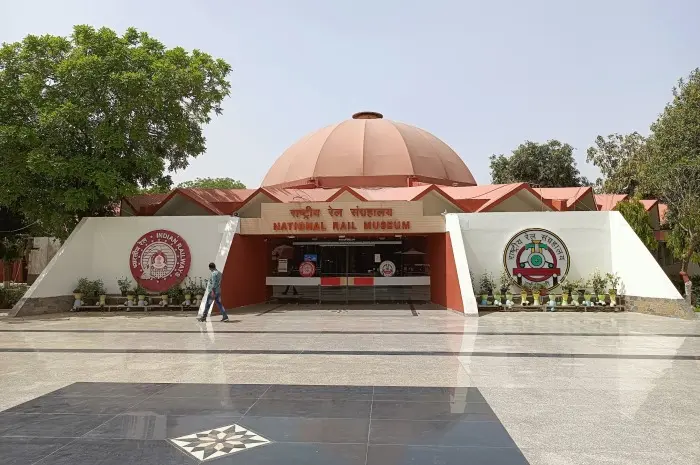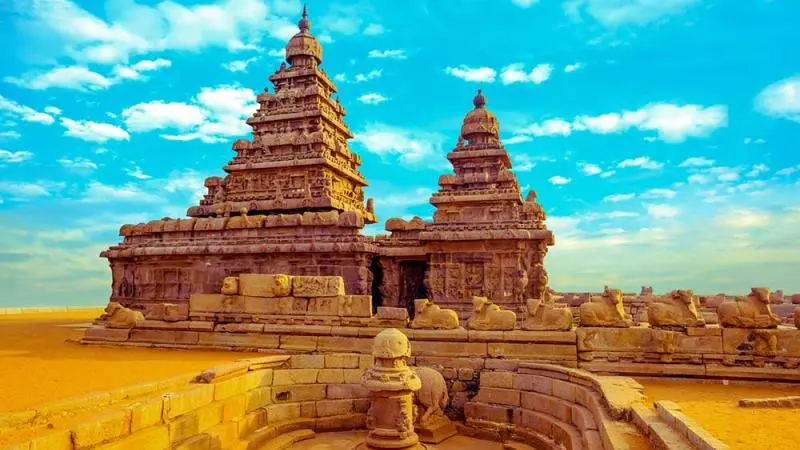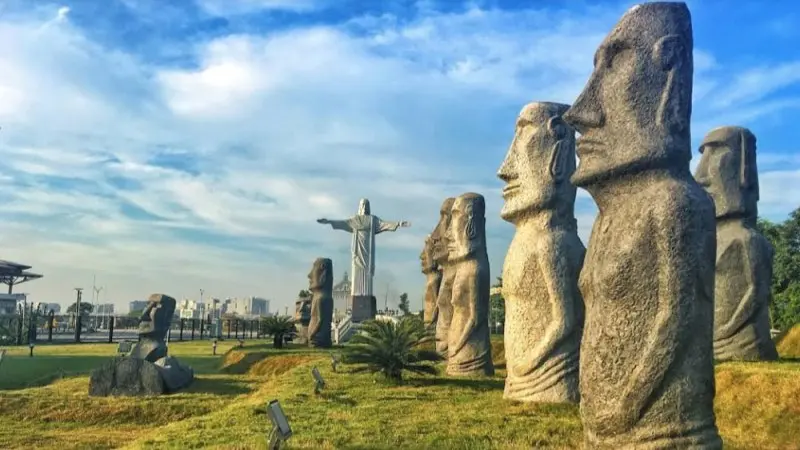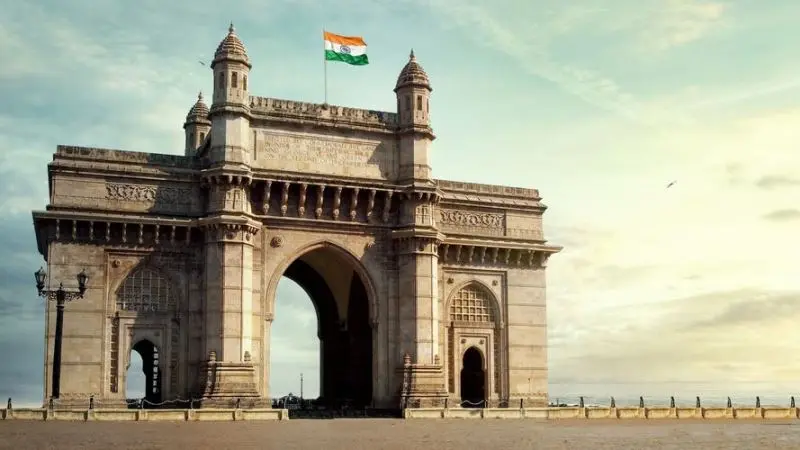| Entry Fee: 50 INR; Location: Check Map Address: Madurai Main, Madurai, Tamil Nadu 625001, India. |
The Meenakshi Amman Temple, located in the ancient city of Madurai in Tamil Nadu, South India, is one of the most significant and revered landmarks in India. As a living temple, it stands as an active site of Hindu worship and is an important pilgrimage destination.
Widely celebrated for its stunning Dravidian architecture, vibrant festivals, and deep-rooted religious traditions, the Meenakshi Amman Temple attracts devotees and tourists from across the world.
The temple is dedicated to Goddess Meenakshi, an incarnation of Parvati, and her consort, Lord Sundareswarar, a form of Shiva, making it unique as it primarily venerates a goddess. With its spiritual ambiance and architectural grandeur, the temple is not only a religious epicenter but also a symbol of India’s rich cultural heritage.
1. History of Meenakshi Amman Temple
1. Origins and Patronage of Meenakshi Amman Temple
The origins of the Meenakshi Amman Temple date back to the 1st century CE, as per historical records, though the present structure was mostly built in the 17th century. It was patronized by various ruling dynasties over the centuries, most notably the Pandya Kings, who considered Madurai as their capital.
2. Evolution and Transformations Over the Centuries
Over time, the temple has undergone numerous transformations and renovations. The temple complex was expanded and embellished under the rule of the Nayak dynasty in the 16th and 17th centuries, which led to the addition of its hallmark architectural feature – the towering, colorfully-sculpted gopurams (gateway towers).
3. Historical Legends Associated with the Temple
The temple’s history is deeply interwoven with mythology. It is believed to be the location where Lord Shiva, in the form of Sundareswarar, married Parvati, who had incarnated as Meenakshi, hence becoming a symbol of divine union. The city of Madurai is said to have been built around the temple, and the streets of the city are believed to represent a lotus and its petals. These legends add to the aura of mystery and spirituality that surrounds the temple.
2. Meenakshi Temple Architecture
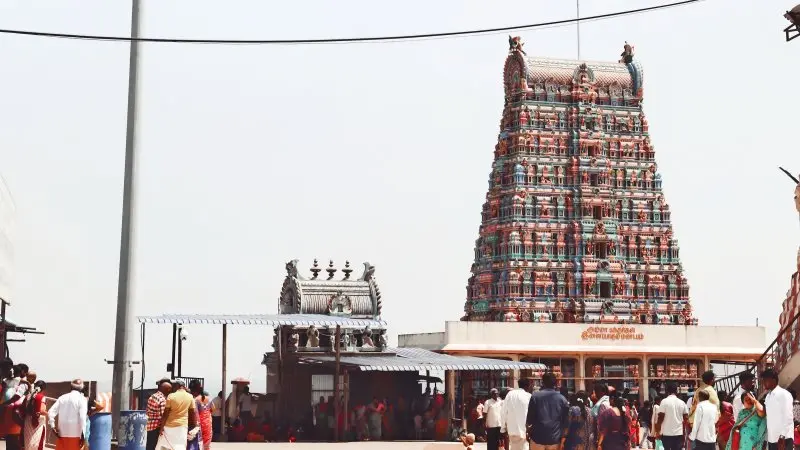
1. Description of the Layout and Structure of the Temple
The Meenakshi Amman Temple is an expansive complex covering approximately 45 acres, enclosed within high walls. It comprises numerous shrines, halls, and ponds. The temple is structured around two main sanctums: one dedicated to Meenakshi and the other to Sundareswarar. These are surrounded by several smaller shrines and grand pillared halls.
2. Detailed Analysis of the Architectural Style and Unique Features
The temple is a remarkable example of Dravidian architecture, known for its towering gateways or gopurams, pillared halls (mandapas), and intricate carvings. There are 14 gopurams in the complex, the tallest of which reaches almost 170 feet. These gopurams are adorned with a staggering array of stucco figures, depicting deities, mythical animals, and other figures.
Another distinctive feature is the “Thousand Pillared Hall,” a splendid example of the engineering skill of the builders. Each pillar in the hall is sculpted with detailed images, and no two pillars are alike.
3. Significance of the Iconic Gopurams (Temple Towers)
The gopurams of the Meenakshi Amman Temple, with their multicolored statues against a brightly painted background, are a defining characteristic of the temple. They are not only architectural marvels but also serve a religious purpose. They mark the entrance to the sacred space of the temple and act as a visual reminder of the divine presence. Each gopuram tells a different religious or mythical story through its sculptures, adding to the spiritual and cultural richness of the temple.
3. Artistic Significance
1. Overview of the Sculptures and Carvings in the Temple
The Meenakshi Amman Temple is a treasure trove of art with thousands of sculptures and carvings adorning its gopurams, pillars, and walls. These sculptures depict a wide range of themes, from divine figures and mythical creatures to scenes from ancient scriptures and everyday life. The intricate carvings and the remarkable detail of the sculptures showcase the exceptional skill and creativity of the artists.
2. Themes and Stories Depicted in the Art
The art in the temple covers a broad spectrum of themes. There are images of the deities Meenakshi and Sundareswarar, scenes from Hindu epics like the Ramayana and the Mahabharata, as well as depictions of mythical creatures and celestial beings. The sculptures also portray themes of love, valor, and morality, providing valuable insights into the social and cultural ethos of the period.
3. Influence on Later Art and Architectural Traditions
The artistic style of Meenakshi Amman Temple, with its emphasis on elaborate detail, vivid imagery, and symbolic representation, has had a significant influence on later South Indian temple architecture and art. The temple’s fusion of art, architecture, and spirituality creates a distinctive aesthetic that continues to inspire and influence artists and architects.
4. Religious Significance and Rituals
1. Importance of the Temple in Hindu Religious Practices
The Meenakshi Amman Temple holds immense religious significance for Hindu devotees. As one of the oldest and largest temple complexes in India, it is a central place of worship and pilgrimage. The temple’s primary deities, Meenakshi and Sundareswarar, are revered forms of Parvati and Shiva, representing the feminine and masculine aspects of divinity.
2. Overview of Main Deities and Their Significance
Meenakshi, meaning ‘fish-eyed’, is an avatar of Parvati, the universal mother goddess. Her consort, Sundareswarar, or the ‘beautiful lord’, is a form of Shiva. Their sacred union symbolizes the harmony of male and female energies and is central to the temple’s spiritual significance.
3. Description of Main Rituals and Festivals, Including Chithirai Festival
The temple follows an elaborate daily ritual schedule, which includes multiple pujas (prayer rituals) and processions. The most significant event at the temple is the annual Chithirai Festival, which celebrates the celestial wedding of Meenakshi and Sundareswarar. The festival, attracting hundreds of thousands of devotees, culminates in a grand procession where the deities are taken around Madurai in ornately decorated temple chariots. Other festivals include Navaratri, Shivratri, and the Float Festival, each marked by vibrant rituals and cultural performances.
5. Meenakshi Amman Temple and Tourism
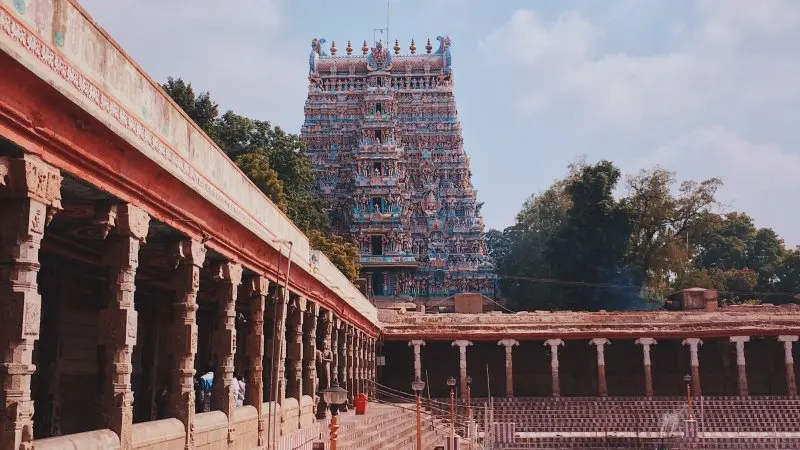
1. Importance of Meenakshi Temple as a Tourist Destination
Meenakshi Amman Temple is not only a significant religious site but also a major tourist attraction in India. Its architectural splendor, rich cultural heritage, and spiritual ambiance draw visitors from all around the world. The temple provides a unique opportunity to experience the vibrant traditions and devotion of Hinduism.
2. Nearby Attractions and Facilities for Tourists
The city of Madurai, where the temple is located, offers several attractions for tourists. Visitors can explore the bustling streets and markets of the old town, visit other historical temples, and witness the traditional art forms of Tamil Nadu. The city also offers a range of accommodations, from budget to luxury, to cater to the needs of travelers.
3. Cultural Tourism and Local Economy
Meenakshi Amman Temple plays a significant role in promoting cultural tourism in Madurai, contributing to the local economy and supporting livelihoods of those involved in the tourism industry. The temple complex hosts various cultural events, including classical music and dance performances, providing visitors with a deeper understanding of the region’s rich cultural heritage.
Conclusion
The Meenakshi Amman Temple stands as a testament to India’s rich cultural, historical, and religious heritage. With its awe-inspiring architecture, intricate sculptures, and deep-rooted spiritual significance, the temple captivates the hearts of visitors and devotees alike. It symbolizes the divine union of Goddess Meenakshi and Lord Sundareswarar, embodying the principles of balance, harmony, and devotion.
Meenakshi Amman Temple continues to be a place of worship, pilgrimage, and cultural celebration. Its architectural grandeur and spiritual ambience attract tourists from around the globe, providing them with an immersive experience of Indian culture and heritage. The temple’s preservation and ongoing rituals ensure that its significance will endure for generations to come.
In conclusion, a visit to Meenakshi Amman Temple offers not only a glimpse into the rich tapestry of Hindu mythology and tradition but also an opportunity to witness the splendor of Indian art and architecture. It stands as a beacon of spiritual enlightenment, drawing people from all walks of life to embrace its timeless wisdom and transcendental beauty.

